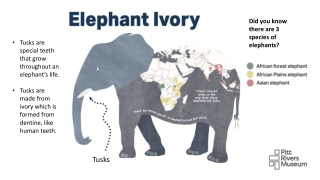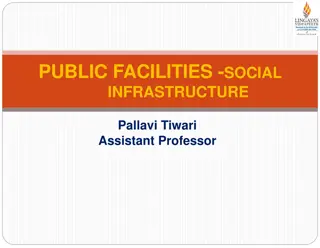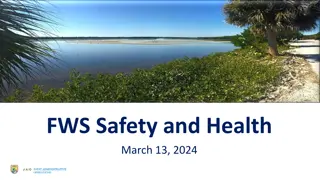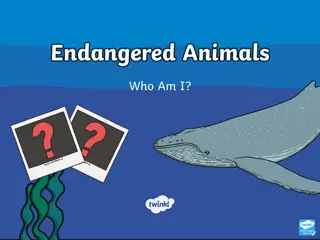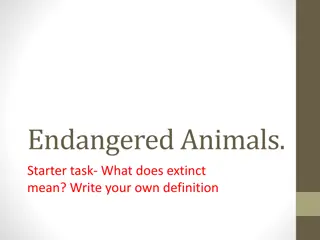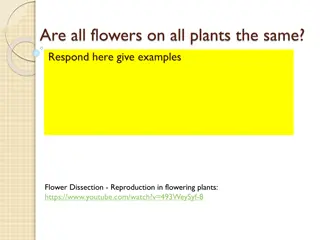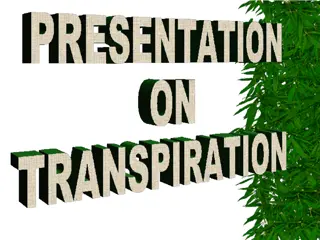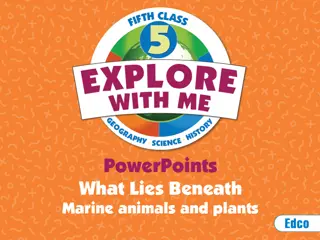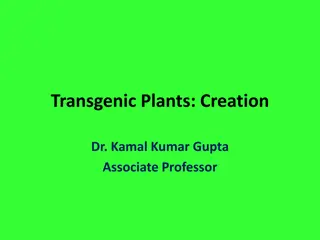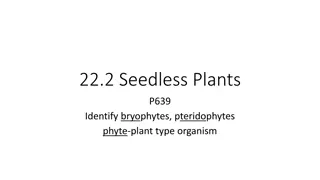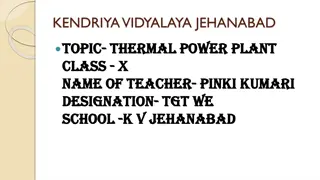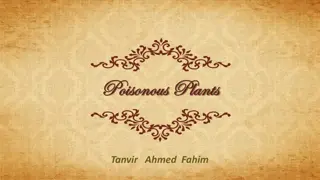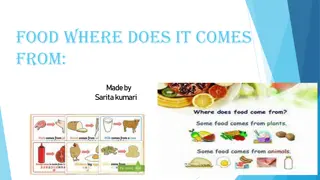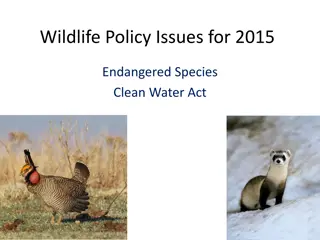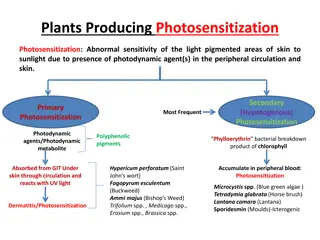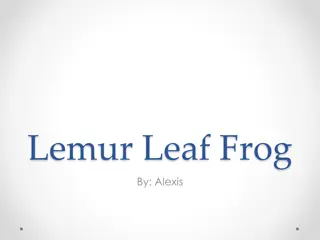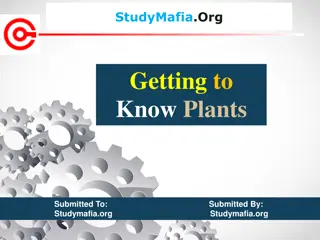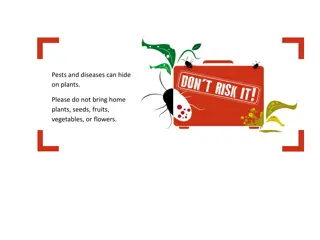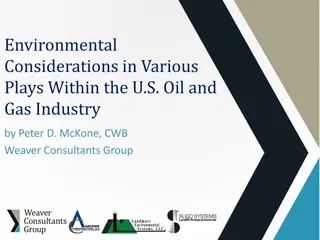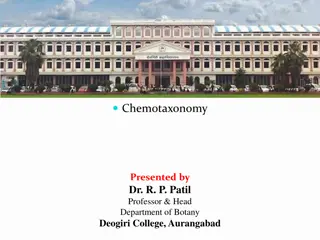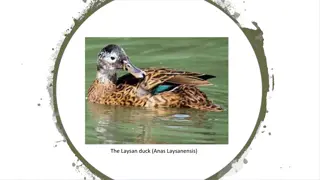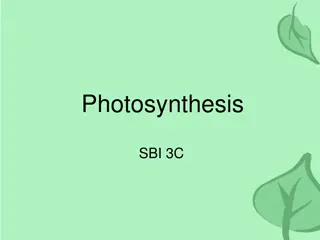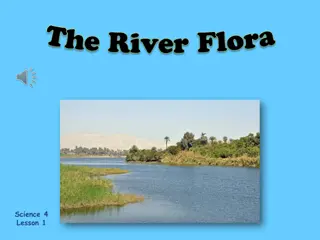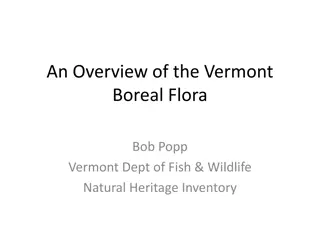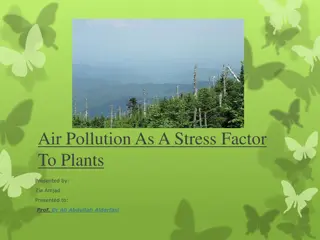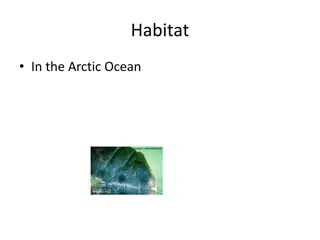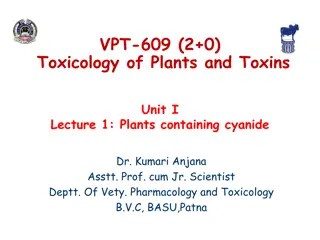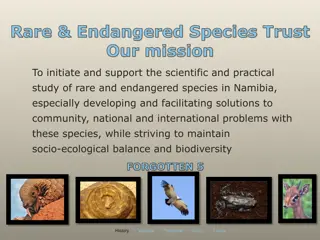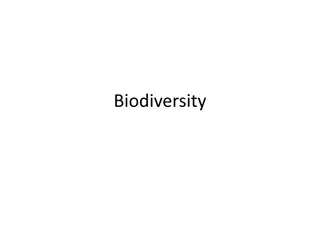The Impact of Elephant Ivory and Endangered Elephants
Elephants have tusks made of ivory, which has been historically used for various objects like games and luxury items. However, the demand for ivory has led to elephants being endangered due to illegal poaching. The material's popularity, durability, and smooth texture contributed to its widespread u
0 views • 10 slides
Biodiversity Parks of Delhi: Oasis of Nature in the Urban Jungle
Delhi's Biodiversity Parks, including the Yamuna Biodiversity Park and Aravalli Biodiversity Park, are unique landscapes that serve as home to vanishing species, wetlands, grasslands, and medicinal herbs. These parks offer ecological, cultural, and educational benefits, representing a conservation s
4 views • 10 slides
Energy Production
Explore different aspects of energy production and efficiency in thermal power plants, water heaters, coal-fired electrical generation plants, and natural gas electrical generation plants. Learn about energy density, mass calculations, overall efficiencies, and specific energy requirements in these
7 views • 57 slides
U.S. Fish & Wildlife Service Overview
The U.S. Fish and Wildlife Service (FWS) is dedicated to conserving, protecting, and enhancing fish, wildlife, plants, and habitats for the benefit of the American people. They enforce wildlife laws, manage endangered species, operate hatcheries, communicate conservation priorities, and more. The FW
0 views • 54 slides
Endangered Animal Quiz and Task Time
Engage in a quiz to identify endangered animals, learn about their characteristics, and discover factors threatening their existence. After the quiz, take part in an activity to create a fact file detailing the chosen animal's habitat, population status, threats, and preventive measures to avoid ext
0 views • 10 slides
Understanding Endangered Animals and Extinction
Explore the concept of endangered animals and extinction through tasks that involve listing endangered animals, understanding reasons for extinction, researching specific endangered species, and contemplating the ethical dilemma of keeping animals in zoos. Engage in critical thinking and research to
0 views • 8 slides
Understanding Flower Variations in Plants
Explore the diverse world of flowers in plants through examples and explanations of their reproductive parts and processes. Discover how some plants have both male and female flowers, while others have separate sex flowers. Learn about perfect flowers, the female and male parts of a flower, and the
0 views • 12 slides
Conservation Strategies to Protect Endangered Species
Methods like captive-breeding programs, preserving genetic material, utilizing zoos and parks, preserving habitats, and implementing conservation strategies are crucial in the efforts to save endangered species from extinction.
0 views • 18 slides
Understanding Thermal Power Plants: Overview and Operation
Thermal power plants play a crucial role in converting heat energy into electricity for various applications. This article covers the definition, layout, working principle, and components of thermal power plants, highlighting their advantages and top features. From converting heat into mechanical po
0 views • 20 slides
Understanding Transpiration and Gas Exchange in Plants
Transpiration is the evaporation of water from plants, mainly occurring through the leaves' stomata. Plants exchange gases like CO2 and O2 through various parts, without specialized organs. The process aids in photosynthesis, respiration, and cooling, demonstrating the importance of transpiration in
0 views • 22 slides
Fascinating Marine Animals: Exploring the Diversity of Ocean Life
Dive into the mesmerizing world of marine animals and plants, where millions of species thrive in the vast ocean. Discover the enchanting features of fish, including their ability to adapt, change appearance, and employ camouflage. Explore the unique characteristics of seahorses, known for their col
1 views • 35 slides
Understanding Transgenic Plants and Agrobacterium Tumefaciens in Plant Biotechnology
Creation of transgenic plants involves various methods such as microprojectile DNA-coating, electroporation, and Agrobacterium transformation. Agrobacterium tumefaciens, a soil bacterium, plays a crucial role in inducing crown gall disease in plants by transferring T-DNA from the Ti plasmid. The Ti
1 views • 27 slides
Understanding Seedless Plants: Bryophytes and Pteridophytes
Explore the world of seedless plants through bryophytes and pteridophytes. Learn about the characteristics of green algae, the life cycles of these plants, and how vascular tissue impacts their growth. Discover the limitations and importance of vascular tissue in plants, from the small yet significa
0 views • 8 slides
Understanding Thermal Power Plants in India
Explore the significance of thermal power plants in India, focusing on their generation capacity, coal-based operations, and key players like NTPC. Learn about the principles, layouts, waste management, and power output of these plants. Dive into a list of major thermal power plants across the count
0 views • 21 slides
Understanding Poisonous Plants and Their Effects on Humans
Poisonous plants can have deleterious effects on individuals, leading to severe consequences and even death if not managed properly. These plants produce toxins that interfere with the body's essential functions, ultimately causing impairment and potential fatality. Recognizing the grades of poisoni
0 views • 11 slides
Understanding Food Sources: Plants and Animals Explained
Food is essential for nourishing our bodies, and it comes from either plants or animals. Plants provide fruits, vegetables, grains, and more, while animals offer products like meat, milk, and eggs. Different parts of plants, such as roots, stems, and leaves, are consumed as food. Animals have varied
0 views • 11 slides
Mineral Absorption in Plants: Mechanisms and Types
Plants absorb minerals from the soil as ions through the roots, with the process of mineral absorption being distinct from water absorption. Mineral absorption in plants can occur through passive or active methods, each involving different mechanisms and energy requirements. Passive absorption is a
0 views • 14 slides
Asexual Reproduction in Plants: Methods and Examples
Asexual reproduction in plants, also known as vegetative propagation, involves various methods such as tubers, bulbs, and runners. It allows plants to reproduce without the involvement of sex cells and fertilization, resulting in genetically identical offspring. Artificial propagation techniques lik
0 views • 11 slides
Wildlife Policy Issues for 2015: Endangered Species & Clean Water Act
Overview of policy issues surrounding endangered species and clean water act in 2015, including definitions, history, causes of endangerment, petition and listing factors. Focus on protecting species like the Lesser Prairie Chicken and Black-footed Ferret. Mention of Kansas' threatened and endangere
0 views • 21 slides
Understanding Photosensitization in Plants: Causes and Toxicity
Photosensitization in plants can lead to abnormal skin sensitivity to sunlight, caused by the presence of photodynamic agents in the skin and peripheral circulation. Primary and secondary photosensitization are common, with various plants and toxins contributing to liver damage and biliary occlusion
0 views • 12 slides
The Endangered Lemur Leaf Frog: A Rare Species Facing Extinction
The Lemur Leaf Frog, with its green color, brown spots, and unique features, is a critically endangered species found in only three countries. Weighing just 2 grams and the size of a golf ball, they are at risk due to Chytridiomycosis. Efforts are being made to protect and breed them in zoos to prev
0 views • 10 slides
Exploring the World of Plants: An Overview
Plants play a vital role in sustaining life on Earth by producing food and oxygen. This comprehensive guide delves into the diverse types of plants, such as herbs, shrubs, trees, creepers, and climbers. It also discusses the essential components of plants, like leaves, transpiration, and photosynthe
0 views • 20 slides
A Closer Look at Plants and Their Importance in Our Ecosystem
Plants play a vital role in our ecosystem, not only through photosynthesis but also in regulating atmospheric gases like oxygen and carbon dioxide. Understanding the definition of plants, from green algae to flowering plants, is essential. By studying plants, we uncover their critical contribution t
0 views • 12 slides
Understanding Plant Classification and Characteristics
Discover the classification of plants based on their structures and characteristics, including vascular vs. nonvascular plants, seed plants vs. seedless plants, and the definitions of angiosperms, gymnosperms, dicots, and monocots. Learn about the history of plant classification and how plants are g
0 views • 27 slides
Water Absorption by Plants: Mechanisms and Adaptation Strategies
Understanding water absorption by plants is crucial for effective water management in agriculture. Plants absorb water through active and passive methods, driven by osmotic and non-osmotic processes. Root hairs play a significant role in facilitating water uptake, with mechanisms such as osmotic act
0 views • 26 slides
Beware of Pests and Diseases on Plants - Protect Your Home Garden
Pests and diseases can easily hide on plants, seeds, fruits, vegetables, and flowers, posing a threat to your home garden. Bringing infected plants home can lead to widespread infestations and damage. It's crucial to be vigilant and avoid importing potentially contaminated greenery. Stay informed, i
0 views • 4 slides
Environmental Considerations in U.S. Oil and Gas Industry
This presentation delves into the various environmental considerations within the U.S. oil and gas industry, covering nationwide and regional issues, industry examples, wildlife impacts, best practices, and cultural resources. It emphasizes federal regulations such as the Endangered Species Act and
0 views • 17 slides
Understanding Chemotaxonomy: Classification of Plants Based on Chemical Constituents
Chemotaxonomy, presented by Dr. R. P. Patil, explores the scientific investigation of the chemical characters in plants for taxonomy and phylogeny studies. It involves classifying plants based on their chemical constituents and molecular characteristics. Principles, methods, and importance of chemot
0 views • 24 slides
The Critically Endangered Laysan Duck: A Story of Survival
The Laysan duck, also known as the Laysan teal, is a critically endangered species originally found on various Hawaiian islands but now restricted to Laysan Island and two other atolls. Driven to the brink of extinction with only 12 individuals left in 1912, conservation efforts are being made to br
0 views • 4 slides
Understanding Photosynthesis: The Process of Energy Conversion in Plants
Photosynthesis is a vital process where plants, algae, and cyanobacteria convert light energy from the sun into chemical energy in the form of glucose. This energy conversion involves the absorption of light by chlorophyll molecules in chloroplasts, leading to the generation of ATP and the formation
0 views • 12 slides
Understanding Endangered Whale Populations through Mathematical Modeling
Explore the past, present, and future of endangered whale populations through qualitative analysis and mathematical modeling. Delve into resource management models, input data analysis, species control parameters, and the importance of managing natural resources for the conservation of whales. Learn
0 views • 29 slides
Diversity of Plants in Rivers and Streams
In rivers and streams, a variety of plants play essential roles by providing shelter, food, and oxygen to animals. From white poplar to water lilies, different plants thrive along riverbanks and in water bodies, contributing to the ecosystem's health and balance. Aquatic plants like water lettuce an
0 views • 6 slides
Rediscovery and Extirpation of Vermont Boreal Flora
Explore the unique flora of the Vermont boreal region, including species that have been locally extirpated, presumed extirpated, and those that have experienced possible local extirpations. Discover the efforts to rediscover and preserve these rare and endangered plants in Vermont's alpine zones.
0 views • 16 slides
Understanding Air Pollution Stress on Plants
The impact of air pollution on plants is a significant concern, affecting their physiology and overall health. Various air pollutants, such as sulfur dioxide, ozone, and nitrogen compounds, have been identified as phytotoxic agents, leading to severe or subtle effects on plant life. Detecting the ef
0 views • 21 slides
Manatees: Gentle Giants of the Arctic Ocean
Manatees, weighing around 800 pounds and reaching up to 10 feet in length, inhabit the Arctic Ocean. They primarily feed on 60 varieties of grass and plants and give birth to approximately 5 younglings a year. Sadly, their population is currently estimated at 3.4 million, facing threats from predato
0 views • 10 slides
Plant Classification and Reproduction Overview
Plants are categorized into four groups: Mosses, Ferns, Conifers, and Flowering Plants. Mosses reproduce by spores and lack roots or xylem vessels. Ferns reproduce via spores, while conifers reproduce with seeds found in cones and have needle-shaped leaves. Flowering plants reproduce using seeds fou
0 views • 8 slides
Understanding Cyanogenic Plants and Cyanide Poisoning in Animals
This lecture introduces the toxicology of plants containing cyanide, focusing on factors affecting cyanide poisoning, cyanogenic plants, mechanisms of toxicosis, clinical signs, post-mortem lesions, diagnosis, treatment, and prevention. It discusses species variations in susceptibility, plant growth
0 views • 22 slides
Understanding Monocot Plants: Features and Families
Monocotyledon plants, a significant group of flowering plants, have unique characteristics such as adventitious roots, parallel-veined leaves, and flowers with parts in sets of three or four. The Poaceae family, including economically important grasses, and the Cyperaceae family, known as sedges, ar
0 views • 7 slides
Rare & Endangered Species Trust: Protecting Namibia's Vultures and Pangolins
Rare & Endangered Species Trust in Namibia focuses on studying and supporting rare and endangered species, particularly vultures and pangolins. With a mission to find solutions to conservation challenges and maintain biodiversity, the trust highlights the history, crisis, and future prospects for th
0 views • 19 slides
The Importance of Biodiversity Conservation in Megadiverse Countries
Biodiversity is crucial for maintaining a healthy ecosystem, but over 130,000 animal species are endangered due to threats like habitat loss, poaching, and man-wildlife conflicts. Megadiverse countries like Australia, India, and Brazil play a significant role in biodiversity conservation efforts to
1 views • 13 slides
